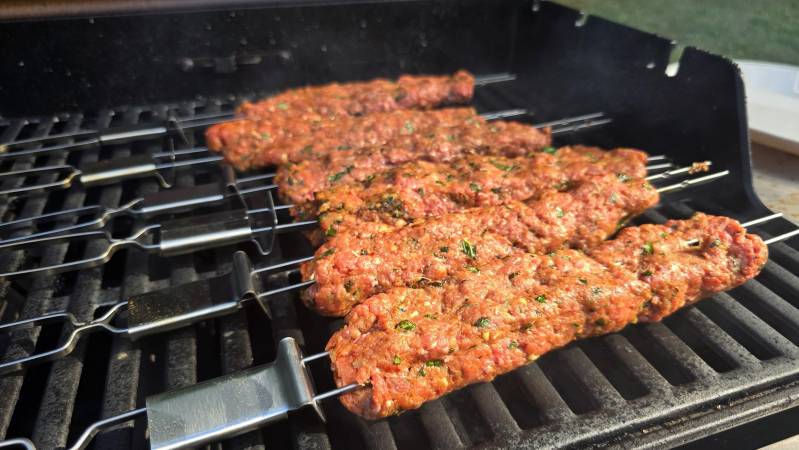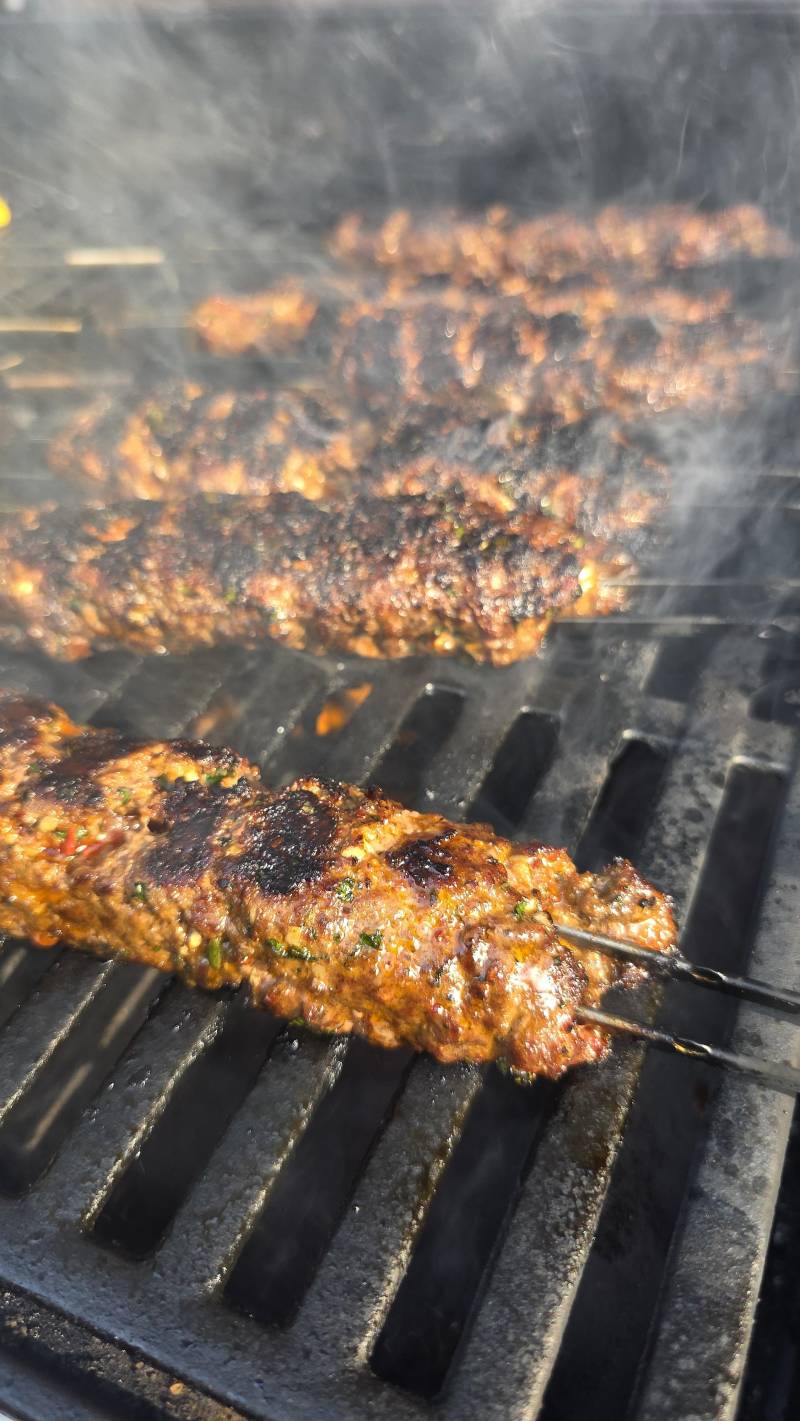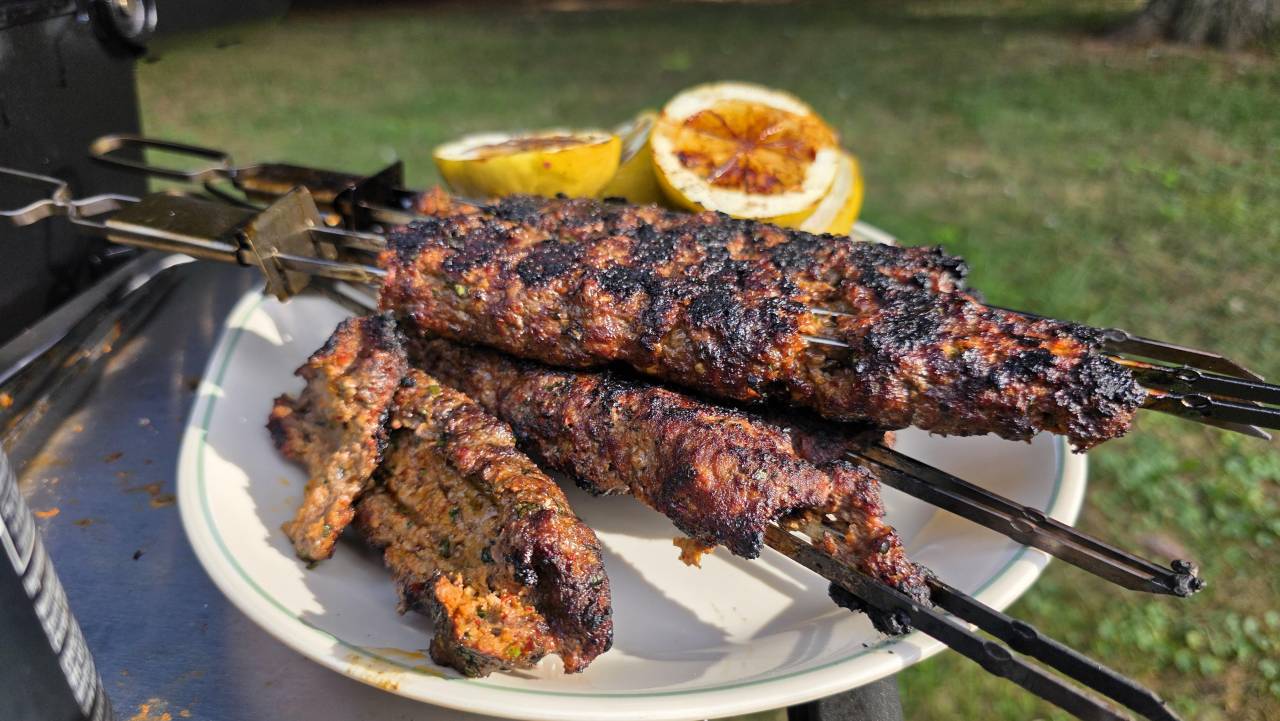I'm passionate about exploring different cultures through food, and grilling recipes from around the world has become one of my favorite ways to travel without leaving home. As I shape seasoned ground beef around metal skewers, the combination of cardamom, Aleppo pepper, and fresh mint from my garden connects me to centuries of culinary tradition spanning from Morocco's Atlas Mountains to India's bustling spice markets.
What Degree Of Doneness Do Your Like Your Steak?
- Cultural literacy gained through understanding how the same base concept evolved differently across regions based on available ingredients and cooking methods
- Cooking versatility developed by mastering techniques that adapt to local spices and preferences, from grilled Lebanese kafta to simmered Indian curries
- Social currency from preparing authentic dishes that spark conversation during dinner parties and backyard barbecues
- Travel preparation for understanding local food culture before visiting these regions, knowing what to order and what flavors to expect
- Flavor mastery through learning how different spice combinations reflect regional palates shaped by ancient trade relationships and cultural exchange
Despite the long list of ingredients, kofta is remarkably simple - anyone can make this dish successfully. You don't even need a premium grill like my Weber Spirit EP-435 with its powerful Sear Zone - a basic grill, grill pan, or even your oven will produce excellent results. This humble mixture of seasoned ground meat has traveled trade routes, adapted to local ingredients, and become a beloved staple across dozens of cultures, each adding its unique signature to what is essentially the same foundational concept.
The Foundation - Understanding Kofta's Cultural DNA
Kofta originates from the Persian word "kūfta," meaning "pounded meat," and was first described in early Persian and Arab cooking guides, which featured ground lamb meatballs glazed with saffron and egg yolk. This ancient technique spread across regions through trade networks such as the Silk Road, which likely facilitated its spread to Asia and Europe, while the Ottoman Empire's expansion introduced the dish to Eastern Europe and new cultural adaptations.
Each culture embraced the basic concept - seasoned ground meat formed into various shapes - then transformed it based on local spices, cooking techniques, and dining customs. What started as a practical way to make tough cuts of meat tender and flavorful became a canvas for cultural expression, with dozens of distinct regional variations telling the story of their people through carefully chosen spices and traditional preparation methods.
Regional Variations and Traditional Techniques
Each culture's approach to kofta reflects local ingredients, cooking methods, and dining traditions that developed over centuries of cultural exchange and adaptation.
Persian Koofteh - The Substantial Centerpiece
Persian koofteh represents the most elaborate version of kofta, with the famous Koofteh Tabrizi reaching eight inches in diameter, making it more of a meal centerpiece than a simple meatball. Persian preparation frequently incorporates rice, bulgur, or lentils along with traditional spices, emphasizing gentle cooking methods that simmer the koofteh in rich tomato-based sauces infused with saffron.
The inclusion of grains creates a heartier texture and reflects Persian cuisine's emphasis on complex, layered flavors. Many versions are stuffed with nuts, dried fruits, or hard-boiled eggs, transforming simple ground meat into an elaborate dish worthy of special occasions. Persian cooks layer spices throughout the cooking process, building flavor complexity through extended simmering rather than high-heat grilling.
Lebanese Kafta - The Herbaceous Grilled Classic
Lebanese kafta features finely chopped parsley and onions blended into ground beef or lamb, creating a bright, herbaceous flavor profile that's perfect for grilling. The Lebanese approach prioritizes the quality of the meat and the freshness of the herbs, with parsley providing subtle background notes rather than overpowering the dish.
Traditional Lebanese preparation involves kneading the mixture by hand until it reaches a smooth, almost paste-like consistency. While Lebanon has a tradition of eating raw meat preparations like kibbeh nayeh (raw lamb with bulgur), kafta itself is typically cooked rather than consumed raw. The oblong shape molded around flat metal skewers makes Lebanese kafta ideal for outdoor grilling, where charcoal adds smoky complexity to the herb-infused meat. Lebanese technique keeps spices subtle to highlight meat quality.
Moroccan Kefta - North African Spice Mastery
Moroccan kefta showcases North African spice preferences, typically featuring sweet and hot paprika, cumin, and black pepper, often enhanced with ras el hanout spice blends that add warmth and depth. The Moroccan version reflects the country's position at the crossroads of African and Mediterranean cultures.
Moroccan preparation often includes olive oil mixed directly into the meat, ensuring the kefta stays juicy during cooking. Moroccan cooks frequently toast spices before incorporation, creating deeper flavors than simple mixing. The spice blend tends toward earthy, warming flavors rather than the bright herbs favored in Lebanese preparation. Street vendors throughout Morocco serve kefta kebabs as popular quick meals, demonstrating how this ancient dish adapted to modern urban life.
Indian Kofta - Curry Culture and Vegetarian Innovation
Indian kofta represents a dramatic departure from grilled versions, with both meat and vegetarian versions typically simmered in spiced curry sauces featuring tomatoes, yogurt, and complex spice blends including garam masala, cumin, and coriander. The Mughal influence on Indian cuisine transformed kofta from a simple grilled dish into an elaborate curry component.
Vegetarian versions using paneer, potatoes, or mixed vegetables are equally central to Indian kofta tradition, reflecting the subcontinent's diverse dietary practices. Popular variations like malai kofta (paneer and potato balls in cream sauce) and lauki kofta (bottle gourd dumplings) demonstrate how the concept has adapted to local ingredients and religious dietary requirements. Indian techniques rely on complex spice blending and tempering methods that create rich, layered flavors through extended cooking times.
Israeli-Style Kebab - Fusion of Regional Influences
Israeli kofta primarily represents a fusion of North African, Middle Eastern, and Mediterranean techniques brought by immigrants from various regions. Rather than developing as a distinct tradition, Israeli preparation combines traditional methods with modern ingredients and presentation styles.
Contemporary restaurant versions might feature kofta served with whipped tahini, toasted pine nuts, and blistered peppers, creating dishes that honor multiple cultural traditions while appealing to modern palates. Israeli street food culture embraced these kebabs as quick, flavorful meals that reflect the country's diverse immigrant communities.
British Adaptations - Westernized Interpretations
British Indian restaurants adapted kofta for local tastes, creating curry house versions that emphasize rich, tomato-based sauces with moderate spice levels designed for broader palates. These restaurant adaptations often feature larger, more uniform meatballs designed for easy eating with naan or rice.
Westernized adaptations sometimes appear in British pubs as "spiced meatballs," loosely inspired by kofta concepts but adapted for diners unfamiliar with traditional Middle Eastern flavors. These interpretations demonstrate how immigrant communities maintain cultural food traditions while adapting to new environments and customer preferences.

My Recipe - A Modern Fusion Approach
For my version, I decided to draw inspiration from multiple cultures while reflecting modern American ingredients (specifically the variation on coleslaw evoking the fresh vegetables typically served with it). My approach combines the Lebanese love of fresh herbs with Persian complexity and Moroccan spice, providing a North African warmth.
My Kofta Blend:
- 2 lbs ground beef (80/20 blend for optimal moisture)
- 1 large onion, finely minced
- 4 cloves garlic, minced
- 1/2 cup fresh mint, chopped (Persian influence)
- 1 tsp cardamom (Persian warmth)
- 1 tsp black pepper (universal base)
- 2 tsp Aleppo pepper (Middle Eastern heat)
- 1 tsp cinnamon (Moroccan depth)
- 2 tsp cumin (North African earthiness)
- 1 tsp smoked paprika (my creative twist on traditional flavors)
- 2 tbsp olive oil
Preparation Method: First, I create a spice paste by combining the minced garlic, spices, and olive oil until well blended. Then I process the onion and mint separately until finely chopped, combine with the meat and spice paste, kneading until the mixture reaches a smooth, cohesive texture. The key is balancing moisture from the aromatics with binding from proper mixing technique.
For best results, refrigerate the mixture overnight - this allows the flavors to meld beautifully and the colder meat sticks together much better on the skewers until the heat bonds everything during cooking.
Skewer Selection and Cooking Notes: While I used metal skewers designed for chunked meats and vegetables, traditional kofta works best with medium or wide flat metal skewers. Many home cooks use round bamboo or wooden skewers, but these allow the meat to rotate around the stick rather than staying secure for even searing on all sides. Flat skewers provide better control when turning and create more consistent browning.
Serving Style: I serve these with a yogurt sauce combining mint, lemon, garlic powder, and salt alongside quick-pickled cabbage and carrots. This combination honors the Middle Eastern tradition of serving kofta with cooling accompaniments while adding fresh, crunchy textures that complement the rich, spiced meat.

Make The Kofta Personal - Embrace Cultural Adventure!
The beauty of kofta lies in its adaptability - just like Middle Eastern traders, warriors, and immigrants have done for thousands of years, you can make this recipe uniquely yours. Some people prefer more heat, so add extra Aleppo pepper or cayenne. Others avoid onions completely - simply increase the garlic and herbs for aromatic complexity.
Feel free to experiment with different meat combinations - lamb adds richness, while ground chicken creates a lighter version. Adjust spice levels to match your family's preferences, swap cilantro for mint if that's what you have available, or add a touch of your favorite regional spice blend. The fundamental technique remains the same, but your personal touches create family traditions that reflect your own culinary journey.
This experimentation mirrors the historical spread of kofta itself - each culture adapted the basic concept to local tastes, available ingredients, and cooking methods. Your kitchen experiments continue this ancient tradition of culinary adaptation and cultural exchange.
Kofta as Cultural Bridge - Connecting Through Food
The global spread of kofta demonstrates food's power to connect cultures while adapting to local preferences and ingredients, creating a culinary thread that weaves through diverse traditions while maintaining its essential character.
Each regional variation tells stories of trade relationships, cultural exchange, and adaptation that shaped Mediterranean, Middle Eastern, and South Asian cuisines over centuries. Modern American kitchens provide unique opportunities to blend these traditions, creating personal interpretations that honor cultural origins while reflecting contemporary ingredients and cooking methods.
Whether grilling Lebanese-style kafta for summer cookouts, simmering Persian koofteh for winter comfort food, or preparing Indian kofta curry for impressive dinner party presentations, these techniques connect modern cooks to ancient culinary wisdom. The simple act of combining seasoned ground meat with cultural knowledge creates dishes that spark conversations about history, travel, and the shared human experience of gathering around good food, transforming every meal into a small but meaningful cultural exchange that honors both tradition and personal creativity.
